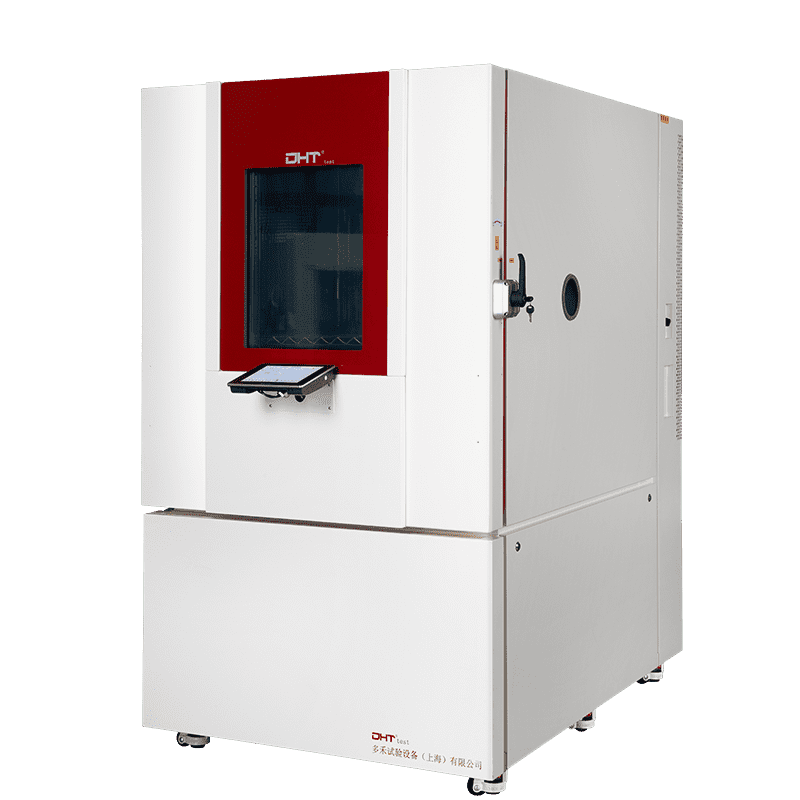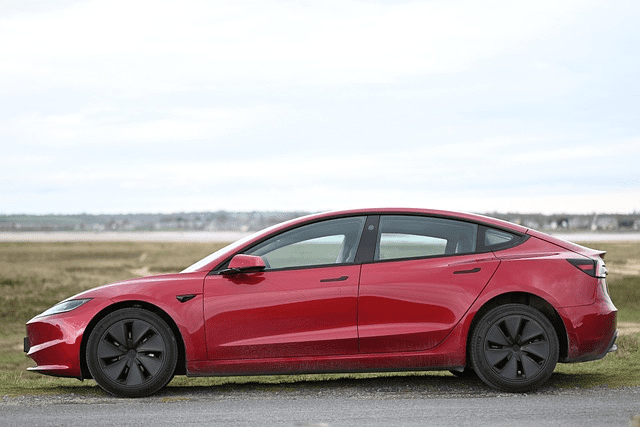- Verständnis der kritischen Rolle einer solaren Klimaprüfkammer bei der Zuverlässigkeitsvalidierung von Kraftfahrzeugen
In the modern automotive industry, the performance of a component is not determined solely by its design—but more importantly, by its ability to withstand harsh real-world conditions. With the rise of electric vehicles, autonomous driving, and lightweight materials, automotive parts are subjected to increasingly complex environmental stressors—especially direct sunlight, high heat and humidity, and temperature cycling. These factors accelerate material degradation, aging, or outright failure.
For this reason, solar climatic testing has become a vital method in automotive reliability validation, and a solar climatic test chamber is now an essential piece of equipment in advanced automotive labs.
This article systematically explains why no serious automotive manufacturer can afford to ignore solar climatic testing, exploring the environmental challenges faced by components, the principles behind solar climatic testing, the functions of solar climatic test chambers, and their long‑term significance for the auto industry.
The Environmental Challenges Facing Automotive Components: More Than Just Sun Exposure
For end users, vehicles are frequently exposed to outdoor conditions—especially in summer and high-UV regions such as the Middle East, Africa, South Asia, and coastal South America. In these environments, sunlight brings not only high temperatures, but also intense ultraviolet radiation and temperature‑humidity fluctuations, all of which place comprehensive stress on vehicle parts.
Specifically, the following types of components are particularly vulnerable to combined sunlight and climate exposure:
- Exterior trims (e.g. bumpers, headlamp housings, body moldings): prone to fading, cracking, or blistering.
- Interior components (e.g. dashboards, infotainment screens, steering wheel coverings): may degrade, soften, become sticky, or emit volatile organic compounds (VOCs) under prolonged sun and heat.
- Electronic modules (e.g. cameras, radar units, optical sensors): high temperatures can cause sensor drift, compromising ADAS performance.
- Plastic connectors and seals: repeated heat and UV exposure can lead to fatigue cracking or seal failure.
Therefore, conventional functional testing at ambient conditions is far from sufficient to assess components’ real-world reliability. This explains why solar climatic testing plays a central role in automotive validation.
What Is Solar Climatic Testing—And Which Real‑World Conditions Does It Simulate?
Solar climatic testing is an accelerated aging method designed to reproduce the combined effects of sunlight, temperature, and humidity in a controlled environment. Its goals are to:
- Evaluate the stability and durability of materials and parts under long-term sunlight and climate cycling.
- Reveal issues such as thermal aging, expansion stress, color fading, or structural fatigue.
- Shorten validation cycles—delivering results equivalent to years of outdoor exposure within just weeks.
Within a solar climatic test chamber, engineers can precisely control variables such as:
- Solar radiation intensity and spectrum (typically simulating AM1.5G or global standard sunlight)
- Temperaturbereich (commonly −40 °C to +120 °C)
- Relative humidity fluctuations (5%–95% RH to mimic dew, rain, and drying cycles)
- Test cycles (day/night alternation, damp/dry cycles, thermal shock patterns, etc.)
This high level of control not only improves testing efficiency but also ensures reproducible, reliable results—providing a solid data foundation for automotive design verification.
The Core Capabilities of a Solar Climatic Test Chamber: It’s Not Just “Sunlight on Demand”
A solar climatic test chamber is far more sophisticated than a device that merely “shines light.” It integrates optical, electrical, thermal, and humidity control technologies. Its core capabilities include:
- Realistic solar spectrum simulation: High-end chambers use full-spectrum xenon or metal-halide lamps to replicate ultraviolet through infrared wavelengths, closely approximating real solar exposure.
- Precise temperature & humidity control: As intense light rapidly increases chamber temperature, advanced units use precision refrigeration, heating, and air-circulation systems to stabilize thermal and humidity levels.
- Smart cycle programming: Users can define complex test sequences—such as “8 h of high solar irradiation followed by 4 h of humid cooling”—to simulate conditions in specific regions like tropical coastlines or high-altitude deserts.
- Extended reliability and safety protection: Automotive part testing often runs 500 to 2,000 hours continuously. Top-tier chambers are designed for unattended operation, containing multiple layers of protection for overtemperature, overload, electrical faults, and more.
Why Is the Automotive Industry Increasingly Reliant on Solar Climatic Testing?
As the global automotive sector accelerates toward electrification, smart technology, and international markets, reliance on solar climatic testing has risen for several key reasons:
- Enhancing global adaptability for export products Climate conditions vary widely: Europe & North America lean cooler, Southeast Asia is humid, and the Middle East experiences extreme heat and sun. A solar climatic test chamber enables manufacturers to validate product suitability for diverse regions during design—reducing potential returns or recalls.
- Meeting OEM supplier qualification standards Leading automakers—such as Volkswagen, Mercedes-Benz, Toyota, Tesla, and others—require strict solar climate testing (per VW PV2005, ISO 4892, SAE J1960, etc.). Tier‑1 suppliers that cannot meet these standards may be disqualified from the supply chain.
- Accelerating validation of new materials and technologies Advanced materials like new polymers, bio-based composites, or transparent coatings must demonstrate resistance to photo-thermo degradation. A solar climatic test chamber can deliver equivalent long‑term exposure results in a fraction of the time, significantly accelerating R&D.
- Avoiding legal liabilities and recalls In some cases, dashboards have cracked or emitted odors under sunlight exposure, leading to consumer complaints and costly recalls. Conducting solar climatic testing in advance helps identify and mitigate such failures proactively.
Conclusion: A DHT Solar Climatic Test Chamber Protects Automotive Reliability
Automobiles are complex systems—and component reliability depends on real-world performance under various operating conditions. A solar climatic test chamber is one of the most effective tools to ensure that performance.
DHT® recognizes the vital role of environmental simulation testing in automotive quality assurance. We specialize in the development and manufacture of high-performance solar climatic test chambers designed to deliver precise, stable, and intelligent testing solutions for OEMs, Tier‑1 suppliers, and lab environments.
In the increasingly competitive global automotive market—with standards growing more stringent—those who master advanced environmental testing gain the upper hand in quality and brand reputation. DHT® solar climatic test chambers are your reliable partner on this path forward.
Contact the DHT® technical team for tailored testing solutions and expert chamber selection guidance. We help you bring your tests closer to real-world conditions—and your products closer to exceptional quality.
Leute fragen auch
Warum ist solare Klimaprüfung für Automobilkomponenten wichtig? Reicht ein Funktionstest nicht aus?
Because in real-world conditions, automotive components are exposed to extreme sunlight, high temperatures, high humidity, and complex environmental stressors. Standard ambient-condition functional tests simply cannot predict long-term durability or failure risks.
Solar climatic testing simulates real-life solar radiation, temperature-humidity cycling, and day-night transitions. It helps engineers identify potential issues—such as cracking, warping, fading, or material degradation—early in the design phase. This is especially critical for vehicles sold in high-UV regions like the Middle East, South Asia, and Africa, where insufficient solar testing can easily lead to customer complaints, performance failures, or costly recalls.
In short, solar climatic testing is a crucial step in ensuring the global reliability and climate adaptability of automotive products.
Wie unterscheidet sich eine solare Klimaprüfkammer von einer standardmäßigen Lichtalterungskammer?
A solar climatic test chamber does far more than simulate sunlight exposure. It integrates precise temperature control, humidity regulation, adjustable solar intensity, and programmable environmental cycles, making it a true multi-factor accelerated aging system.
Unlike basic light aging chambers, which primarily focus on UV or visible light exposure, a solar climatic test chamber can realistically recreate real-world climate interactions—for example, scorching dry daytime heat followed by humid nighttime cooling. This makes test results far more representative of actual field conditions, which is critical for components used in automotive environments where material stability and performance are paramount.
Wir sind ein Automobilteilelieferant - Beeinflusst das Auslassen von Solar-Klimatests Kundenprüfungen oder Qualifikationen?
Yes—significantly. Most major automakers (including Volkswagen, Toyota, Mercedes-Benz, Tesla, and others) mandate solar climatic testing in their supplier qualification standards (such as VW PV2005, ISO 4892, or SAE J1960).
If you cannot provide certified test data, your products may fail to pass qualification reviews—resulting in disqualification from Tier-1 supplier lists or exclusion from the OEM’s approved vendor network.
Owning a solar climatic test chamber—or partnering with a qualified third-party lab—is a critical step toward winning trust, passing audits, and securing long-term supply agreements with global automotive brands.


